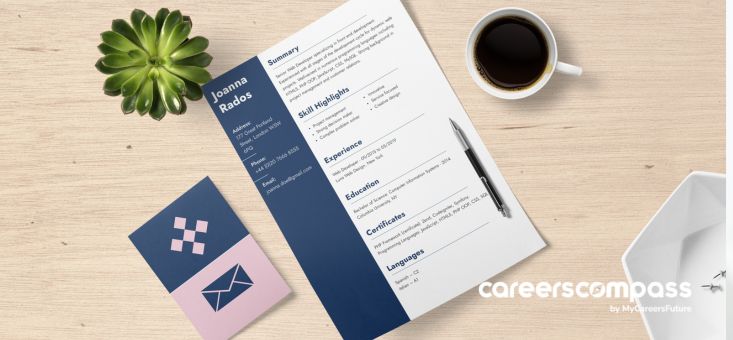Since emails do not carry any visual cues, it’s important that you write and communicate effectively to portray yourself as a suitable candidate.
But employers get hundreds of emails every day, so how do you make yours stand out from the crowd?
Here are the five most crucial steps to getting it right:
1. Use an actionable subject line
Subject lines are very important because it gives the reader a glimpse of what the content is about so never leave it empty.
Make sure that you clearly mention the job description that you’re applying for and that it exactly matches the job title provided in the job listing so as to avoid any confusion.
For instance, if the role you are applying for is a Digital Content Writer, stick to that title instead of simply indicating it as a Writer position.
Also, be clear about the purpose of the email. Don’t be vague about it and use the job title as a standalone subject line.
It needs to be a little more informative and indicate to the employer that you are applying for an open position.
A good subject line could be “Job Application: Digital Content Writer” or “Application for Digital Content Writer — (name)”.
2. Write formally and use a professional tone
This should go without saying, but remind yourself that you are not emailing your friend so be sure to avoid slang, abbreviations, acronyms, emojis, and GIFs.
While some startups and businesses have a relaxed company culture, it’s best to play it safe and use a professional tone throughout the message.
You can start off the email by addressing the hiring manager.
You should strike a warm yet respectful tone — the most common greeting is ‘Dear’, followed by the name of the contact person mentioned in the job listing.
It’s best to address your email to the contact person directly, but if there is no name provided, you can also use ‘Dear Sir/Madam’.
Informal greetings such as ‘Hi’ and ‘Hey’ should be reserved for personal correspondences instead.
As a form of introduction, you can mention the job role you are interested in and how you found about it.
It’s helpful to include referrals from someone who has a contact at the company.
Being able to mention a mutual acquaintance when writing to the employer gives you an immediate connection and can help get your resume noticed.
You should also show a keen interest in the growth or milestones of the company from the perspective of an experienced worker, especially if you were in the same industry.
3. Customise the message according to the job position
In the email, you need to briefly list down your educational background and job experiences (even internships, if applicable).
It’s best to underline the scope of your previous jobs, and if relevant, accentuate how your past roles can help contribute to this new position you’re applying for.
By highlighting related skills that suit the job description, it helps you to position yourself as a deserving candidate.
If the job requires a candidate with leadership qualities, you can showcase examples of how you led your team at your previous workplace.
If it requires you to be creative, you can include links to the portfolio of past work so they can gauge your skills and proficiency.
You should also emphasise the more impressive parts of your resume, such as the more influential and successful projects you’ve worked on to highlight your capability.
Essentially, the content of the email should be a sales pitch to sell yourself, so don’t be afraid to embellish and refine your achievements to impress the employer.
For instance, when describing job roles, “social media content management” sounds more formal than “post content on Facebook page”.
Read Also: Online Job Applications: Tips to Optimise Your Resume and Stand Out
To wrap up the email, provide a call-to-action for the employer to invite you down to the office for an interview, by expressing your eagerness to meet and discuss the job further.
It would be good to also include some form of timeframe, such as providing your availability dates.
4. Don’t forget your resume
Your job application is only significant if it contains the relevant document(s) to support your candidacy.
Be sure to clearly state in the email that you have enclosed your resume, and any other relevant supporting documents such as academic certificates, testimonials, and a portfolio of your work.
Most importantly, do remember to double-check that you’ve actually attached them!
When you forget to attach these documents in an email, chances are that the hiring manager won’t be bothered to chase you for the documents, and simply not consider your application.
Make sure that you attach these files because they will determine if you are indeed eligible for an interview.
In your resume, include detailed statements describing significant successes from previous roles, and key management responsibilities you may have had.
Don’t feel bound to outlining your experience in chronological order and feel free to position your time off as a growth experience — describe what you were involved in during that period of time, and how you enhanced yourself professionally and personally.
5. Provide an informative signature
Keep it courteous till the end — some common formal sign-offs include ‘Best regards’, ‘Sincerely’ and ‘Yours truly’.
It’s best to end with an informative signature (name and contact details such as phone number and email address) so employers can see how to contact you at a glance.
Do take note to provide a professional-looking email address though.
A simple and straightforward option is to use a close variation of your full name, such as firstname.lastname@gmail.com.
You can also go a step further to include your business-related social media links such as your LinkedIn profile so they can learn more about you.
Before you hit that ‘send’ button, proofread your email to ensure that it’s free of any spelling or grammar mistakes.
Remember…
Ultimately, the body of the email should convey three things:
- Your knowledge of the job and some understanding of the company
- Why do you think you are qualified for the job
- Your desire to schedule an interview or call to learn more about the job. Make sure to include your availability
Examples that are relevant or at least parallel to what you think is required of the position are definitely powerful materials that should be included in the email.
Keep it short and succinct — the ideal length should be around 250 to 350 words, or around 4 paragraphs long.
That said, don’t forget to inject a little bit of your personality so it doesn’t come across like a template email.
Now that you know what to include in your email and how to format it, go out there and start sending your job applications.
Happy job hunting!
Better search results on MyCareersFuture
Find more relevant jobs more suited to you with our enhanced search experience. Simply go to MyCareersFuture and search for jobs by title or keyword. Click on job listings you’re interested in, then log in to apply.















